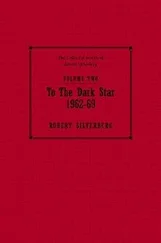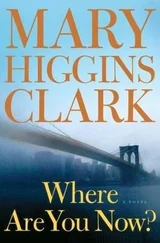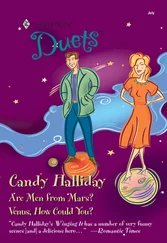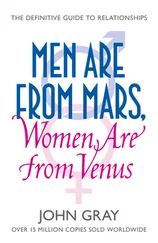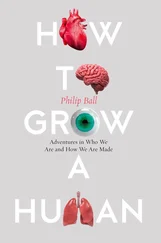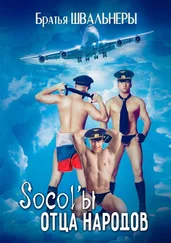And if we were in any doubt about our ability to ask for what we wanted, or explore a little further, there was Madonna. Cavorting around on stage with her male dancers and her Jean Paul Gaultier conical bras, she showed us all what we could ask for, and how we could ask for it. And for reference, she published Sex , a high-fashion, high-gloss tome packed with beautiful black and white photographs shot by Steven Meisel. Now everything from bondage to role-play was on the menu. She might have been scandalous, and confrontational to the Catholic Church, but for her fans Madonna was two steps ahead of the path we were on. If Madonna could have it every which way, then why couldn’t we?
And so we asked for it. If the Eighties were all about swinging your man around the boardroom by his tie (doing it his way, in other words), the Nineties became about girlie sex. What did we want? Could we reinvent sex as something sexy, rather than as a sport? Could sex finally be about us, and what we wanted?
But that’s not to say the pleasure wasn’t hard won. Tell me a good ‘losing my virginity’ story and I’ll show you a satisfied nun. The problem with untutored sex and early relationships is no one has a clue what they are doing. The emotions are disproportionate; the sex is pretty unmemorable, although I did have one boyfriend who insisted on playing Prince every time we made out. That was cool.
But we were lucky, so much luckier then than now, as the playing fields were relatively safe. Leaving aside AIDS, there was less sexual disease, condoms were de rigueur (you could buy them in the Body Shop) and there was no internet porn teaching kids that a shaved pubis, boulder breasts, hair extensions and a repertoire of groans and grinds was normal. Or that anal was normal, or threesomes, or goats, or gang rape or abuse or whatever else gets passed around in the playground these days. I think, when it came to sex, our timing was very fortunate indeed.
So from the Eighties we had economic prosperity, but we saw the pain of its cost in the strikes, the decline of manufacturing and the polarisation of the working class. We had social consciousness in Band Aid, Greenpeace and the anti-apartheid movement. We knew what it was to come together as a society in great national moments, either via the TV, or Live Aid, or politics, or pop music. The progress of sexual equality in the Eighties was teeing us up nicely – I was educated to have a career, unlike my mum and many of her friends, who were educated to get married and be good at sewing on buttons.
Sex was an adventure that was ours for the asking. Life seemed positive, progressive, relatively peaceful. The wrongs in the world were being put right. Famine, prejudice and environmental destruction were being held to account. Life was not unmanageable, things were not moving too fast. So what would Generation X do next? What, as they came of age, would change? What did we have to give?
As the Eighties drew to a close, up in London a whole new scene was happening – a cultural cutting edge that was about to explode into the mainstream and change what we all thought forever. But that was still a long way away from me in Bournemouth, in 1989, aged sweet sixteen.
2
In the summer of 1987 London’s nightlife scene was fractured. The Leigh Bowery performance art scene at the Blitz was burning itself out and the music of soul boys, hip hop, rare groove and pop was progressing independently of each other. Four friends who worked the scene as DJs and promoters decided to celebrate a birthday with a trip to Ibiza. The birthday was Paul Oakenfold’s, and his friends were Danny Rampling, Nicky Holloway and Johnny Walker.
They had been to Ibiza before but had never experienced the ‘after hours’ scene that people were beginning to talk about – the places people went to after the clubs had shut. They had heard of a place called Amnesia, an old farmhouse out in the countryside that was an outdoor club for those in the know. It opened at 3 am and went on till noon the following day. They had also heard about this new drug, ecstasy. None of them felt inclined to take it until they got there – but under the stars, in the warm summer air, ‘hearing this amazing mix that DJ Alfredo was playing’, and finding themselves in the middle of a scene not even they could have anticipated, everything changed. ‘I was really anti-drugs in those days,’ says Nicky Holloway. ‘I used to chuck people out of my clubs for having a puff. But everyone round us was doing it, and it looked like so much fun. I was like, alright then.’
‘There were no laws: people were making love on the dance floor, drinking and dancing, taking litres of liquid ecstasy between them,’ reported one of the barmen at Amnesia, a German by the name of Ulises Braun. ‘It looked like a Federico Fellini movie; every personality was different. Everyone was dressed up. I dressed like d’Artagnan, in high boots.’
In the middle of the dancefloor was a mirrored pyramid, around the edges were bars and chill-out areas with cushions and plants. It was like being in a tropical garden.
‘It was a complete revelation to all four of us,’ says Danny Rampling, ‘out there in the open air, on that dance floor on that Mediterranean island. It was all about music and hedonism, but what was so unique were the people – they were really cosmopolitan. Even the DJ, Alfredo, was a maverick on the run from the junta in Argentina. He had fled to Ibiza as a political refugee.’
‘We would never have gone to a place with 40- or 50-year-olds back in London,’ says Holloway, ‘but Amnesia didn’t have any barrier – of age, colour or country. There were people from Switzerland, Holland, Singapore, Germany, Brazil. And the music was completely different, too. It was Balearic, which means it would go up and down. There was house music, but then Alfredo would play Carly Simon or Kate Bush – things we would turn our noses up at, at home. But on ecstasy, in that euphoric club, the whole thing made sense. At 7 am, in the morning light, Alfredo put on U2’s “I Still Haven’t Found What I’m Looking For”. It opened our ears and our eyes. Everything fell into place.’
‘All four of us changed that night,’ says Rampling. ‘In Ibiza I got my brief to do what I wanted – I wanted to play to my own crowd of people.’
‘We came back like salesmen,’ says Holloway.
Within five months of their return to London Paul Oakenfold started Spectrum, Danny Rampling started Shoom and Nicky Holloway started Trip. ‘At that point the London club scene was based in the past – funk and soul and things,’ says Rampling. ‘When house music came along it completely changed everything. It was revolutionary. It brought with it a wave of empathy and unity, fuelled by one thing and another. Ecstasy, yes, but also the political and economic situation in the mid Eighties. At that time Great Britain was very depressed – there was high unemployment. A lot was changing around the world: the apartheid regime in South Africa was imploding, the Wall was coming down in Berlin – there was change going on and we all were experiencing it.’
Shoom became a legendary success. There were 50 people on the first night and twelve weeks later 2,000 people were queuing down the street. Spectrum and Trip were similarly groundbreaking. ‘It just caught a wave,’ says Holloway. ‘It couldn’t have happened without E – let’s not pretend – but overnight it went whoosh! We were doing Tripping the Sin at Centrepoint, and everyone would empty out of the club in the morning and start dancing in the fountain, singing songs and hugging each other. The police just stood there – they didn’t know what to make of it.’
Without the internet – with only word of mouth, flyers and some helpful PR from the tabloids – the scene still went national. ‘I remember the Sun doing a story on evil acid house and how bad it was,’ laughs Holloway. ‘They had pictures from a rave at an airfield – but by putting it on the front page they were unwittingly advertising it to everyone. Everyone was thinking, “That looks fun. I’ll have some of that!”’
Читать дальше



